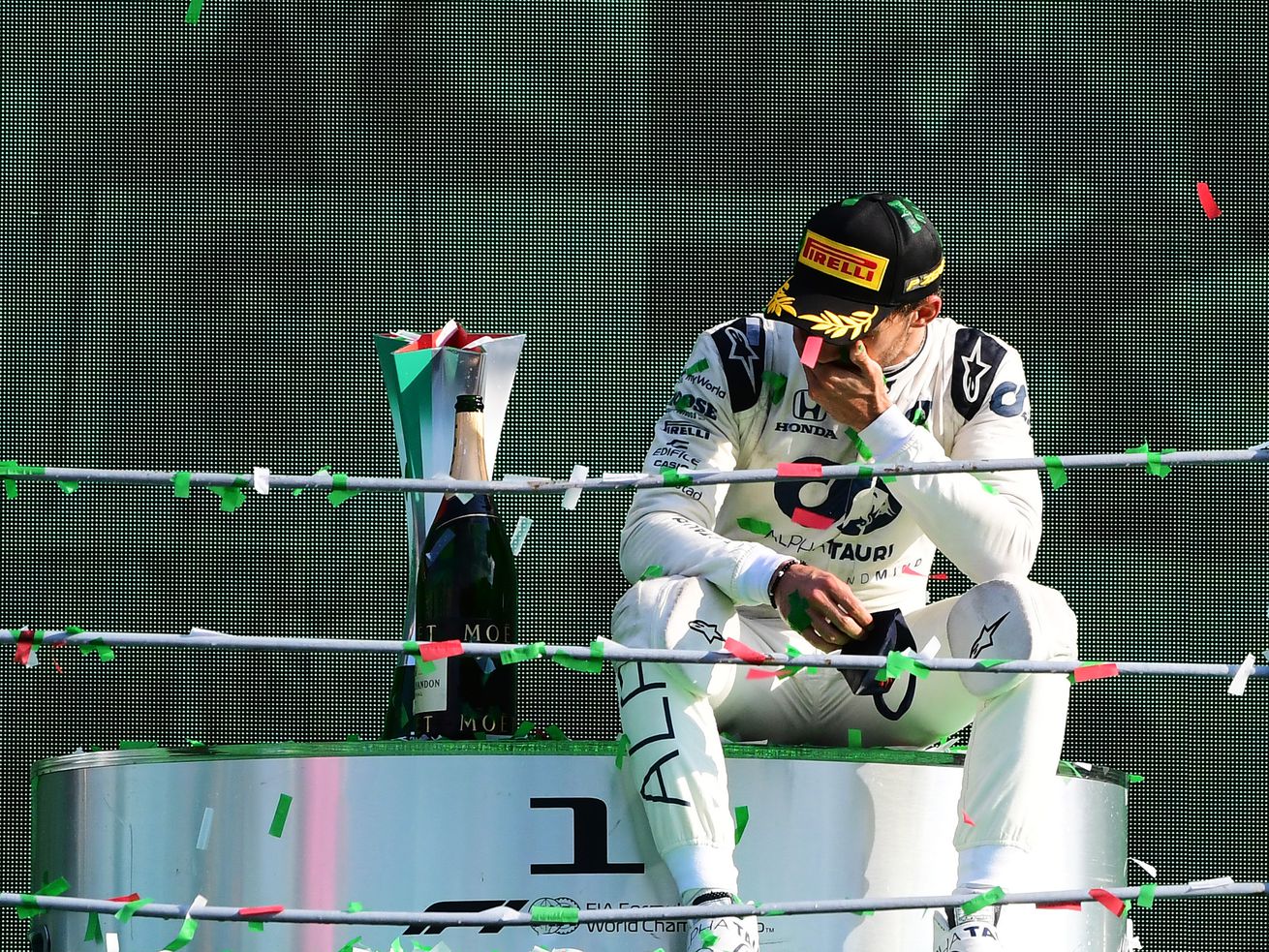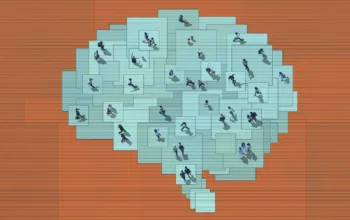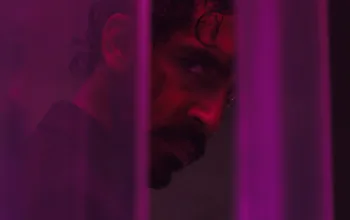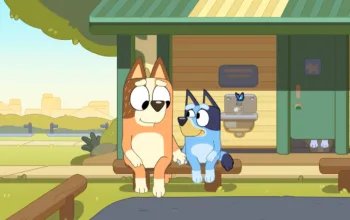Imagine the Real Housewives, if the housewives were driving at 300 kilometers an hour.
Four months ago, I started watching Formula 1: Drive to Survive, a Netflix series about car racing with a hilariously high-octane name. It changed my life.
For context, I have never been a sports person. Until last May, I’m not sure that I’d made it through an entire broadcast of any sport, ever. Instead, I’d watch people at bars and in living rooms as they fixated on the movements of tiny people on a screen, and I’d laugh to myself a little.
But in my post Drive to Survive life, I sleep over at my friend’s house on Saturday nights so we can wake up at eight in the morning on Grand Prix Sundays and watch what I will freely admit is a glorified car and energy drink commercial. I’m now the one glued to the screen, shouting obscenities and making wild predictions. I am a committed sports person. So how did this happen to me?
Drive To Survive is about Formula 1, but it’s actually about interpersonal drama. There’s a reason it’s just been renewed for a fourth season.
It has rich young men who have longstanding beefs and/or tragic backstories. It has team bosses cattily sniping at one another over engines and obscure regulations. And it has lots of drivers slamming into each other in funny-looking cars. Basically, imagine the Real Housewives, if the housewives were driving around at 300 kilometers an hour, and if occasionally one of the housewives caught on fire.
When I rewatch the series now, I realize that it takes a lot of creative license with driver relationships, and it does some pretty questionable futzing around with timelines, sound effects and race-day commentary. It also fails to spend meaningful time on the problems that the sport has with inclusivity, squeezing them into a few minutes at the end of a single episode. It spends even less time acknowledging F1’s tendency to choose host countries with problematic policies on LGBTQ issues or human rights abuses. But what Drive to Survive does do is welcome viewers like me with open arms and offer us a ramp into the sport. And it does that very, very well.
The Netflix show is actually part of a larger shift for F1 in general. Under the new ownership of Liberty Media, the sport has been trying to reach out to new fans. (This in contrast to the approach from one previous owner, Bernie Ecclestone, who favored—and I am not making this up—rejecting social media and young fans in order to focus on appealing to septuagenarians.)
Some of the sport’s new campaigns have been quite successful. Liberty Media created a vibrant social media ecosystem, filling its YouTube, Instagram, and Twitter channels with cute animation roundups of driver audio and mini competitions that showcase the drivers’ knowledge (or lack thereof). Other initiatives have gone less well. In a bid to attract more women to the sport, F1 has partnered with a women-only championship that is wildly difficult to actually access in the US. (Put it on F1TV, you cowards! I desperately want to root for Jamie Chadwick and Alice Powell in real time!)
But I’d argue Drive to Survive is F1’s best tool to draw in new viewers. In a July New York Times article, ESPN said the sport’s viewership had grown from around 547,000 people in 2018, when the Netflix show launched, to almost 1 million in 2021. And that’s not even the global audience number. The show has also boosted female attendance at races by 30 percent, according to the president of an F1 promoter organization. I’m not even the first person to write about its effect on them.
It’s accomplished all this by introducing people to the human side of motorsport, instead of overwhelming them with a tidal wave of car aerodynamics factoids and hoping they’ll eventually follow along.
And it turns out that, once I got into the sport, I was interested in car aerodynamics. In the last few months, I’ve watched dozens of YouTube videos and listened to multiple podcasts about car rake philosophies and downforce generation and F1’s twisted history. I’ve read great articles about the 2022 regulation changes. I’ve texted my friends in the middle of the night with links to essays written by F1 drivers.
/cdn.vox-cdn.com/uploads/chorus_asset/file/22820573/Screen_Shot_2021_09_01_at_2.03.37_PM.png)
But the thing I appreciate the most about Formula 1 is that it has helped me feel happy and connected to people at a time when happiness and connection are in such short supply.
After I got vaccinated, I had to figure out how to properly socialize again. But everything felt hard and vaguely unsafe. I’d bike out to a coffee shop to sit outside with a friend and run through variations of the same conversations: Nothing was really new yet. Everything was grim. We were all struggling.
So when my best friend Shane invited me to a bar with his friend Sam and we spent the evening debating the merits of various drivers (specifically Pierre Gasly and George Russell, the kings of my heart), it was a relief to feel so normal.
Now, Grand Prix races are built-in excuses to go over to Sam’s house every few weeks. Sam and Shane and I can lounge around on the couch drawing downforce diagrams, or I can tell them what I’ve read about Adrian Newey’s genius engineer skills, or we can kvetch about the super license point system. I’ve also started reaching out to people on Twitter who are writing about Formula 1, and I have discovered a community of silly, wonderful nerds who want to talk about everything from tire strategy to the drivers’ fashion choices.
I’ve even subjected non-fans to (far too much) Formula 1 content, going to backyard parties and talking, at length, about the time Jaguar stuck a $300,000 diamond on the nose cone of a car at a Monaco Grand Prix, and then promptly lost the diamond when the car crashed. (To the friends I have done this or the equivalent to: I am sorry, but I will also probably do it again.)
And sure, gossiping about Formula 1 isn’t really the same as sharing stories about my own adventures. Hopefully someday soon, we’ll all be able to live full lives again instead of constantly worrying that, if we’re too lackadaisical, we’ll accidentally infect someone’s grandmother with a deadly virus. But until then, watching Formula 1 is a way to have something to look forward to, and it’s a way to feel human.
So I’m endlessly grateful to Drive to Survive for teaching me something that so many people already know: Sports are great, actually. And they give us a drive to survive.
Formula 1: Drive to Survive is streaming on Netflix. For more recommendations from the world of culture, check out the One Good Thing archives.
Author: Byrd Pinkerton
Read More



